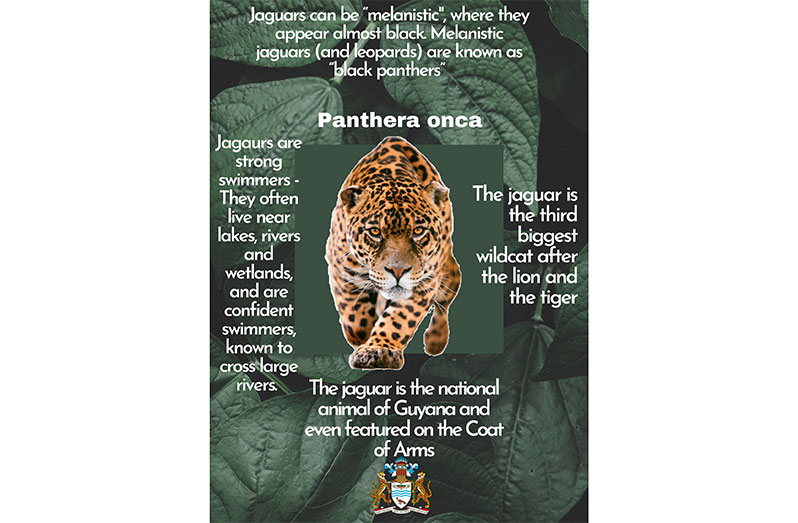WITH their beauty, power, and speed, jaguars are the iconic big cat of the Americas. Today, their future is in our hands. With this said, International Jaguar Day was created to raise awareness about the increasing threats facing the jaguar and the critical conservation efforts which are in place to ensure its survival. Observed annually on November 29, International Jaguar Day celebrates the Americas’ largest wild cat as an umbrella species for biodiversity conservation and an icon for sustainable development and the centuries-old cultural heritage of Central and South America. International Jaguar Day also represents the collective voice of jaguar-range countries in collaboration with national and international partners, to draw attention to the need to conserve jaguar corridors and their habitats as part of broader efforts to achieve the United Nations Development Goals.
Why protect jaguars?
Jaguars are the top predators in their environment, so they play an important role in controlling the populations of other species. This helps keep a balance in the food chain, and a healthy environment. Despite their ecological and cultural value, jaguars have lost approximately 50 percent of their original range, and all across their current distribution, jaguar populations are declining. Jaguars are mostly threatened by habitat loss and fragmentation; human encroachment; decrease in their preys’ populations; and direct killings derived from increasing conflict with humans, and recently to enter illegal markets. Unfortunately, there is a chilling new increase in trade in body parts of the jaguar.
 We must take a more holistic approach to Jaguar conservation!
We must take a more holistic approach to Jaguar conservation!
How can we do this? A major focus needs to be put on the critical need to safeguard core jaguar landscapes, and to reduce the direct killing of jaguars, as well as to promote transboundary and international cooperation, and enhance the cultural value of jaguars in the Region. Whilst these approaches are common to the jaguar-conservation work of other organisations, like WWF and its associate organisation FVSA, they have a particular niche in jaguar conservation through their focus on governance and community-based approaches; collaborative partnerships for jaguar work in indigenous territories; engagement with the private sector for jaguar-friendly economic activities in productive areas. We need to move away from what we can do and start doing: that is the only way we will save this majestic species.
In Guyana, several organisations work together to ensure the protection of these wild cats, including the EPA, the Guyana Wildlife Conservation and Management Commission, and the Protected Areas Commission.
Visit https://tinyurl.com/awkacv68 for more information on jaguar corridors.
You can share your ideas and questions by sending letters to: “Our Earth, Our Environment”, C/O ECEA Programme, Environmental Protection Agency, Ganges Street, Sophia, GEORGETOWN, or email us at: eit.epaguyana@gmail.com. Follow us on Facebook and Instagram and subscribe to our YouTube channel.



.jpg)










